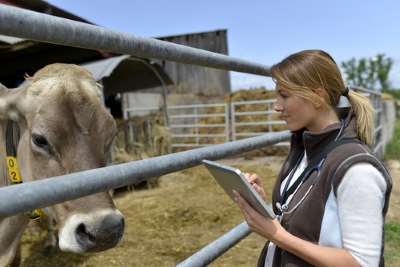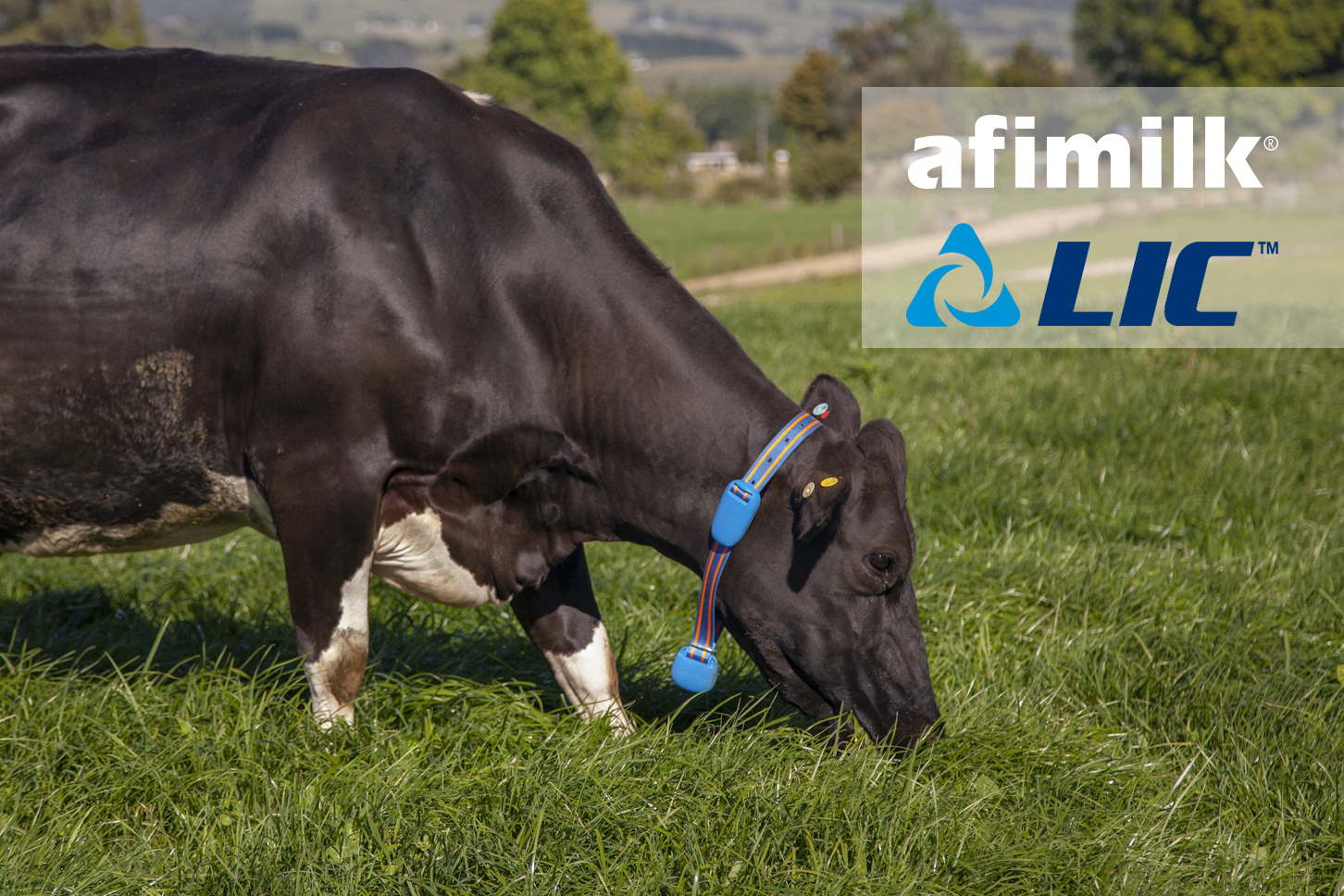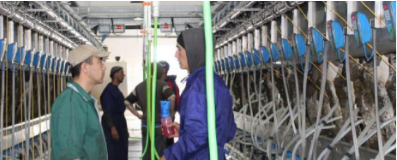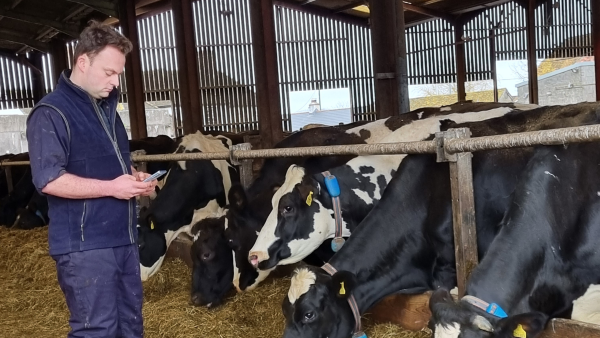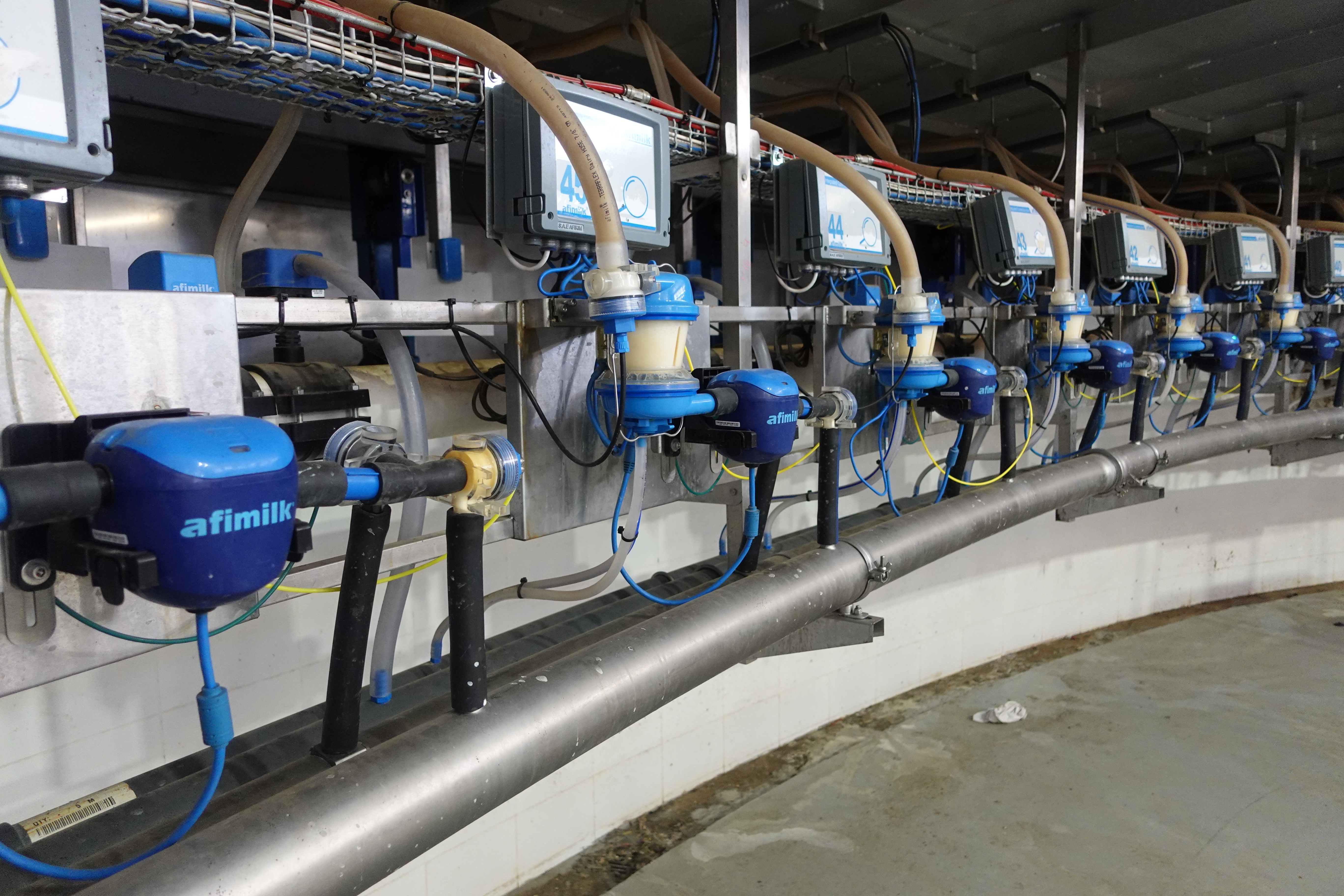Foreward: Afimilk and Electrical Conductivity
It is important to note that the AfiMilk Milk Meter also monitors conductivity. Conductivity monitoring is currently the most reliable detector of mastitis. That makes monitoring milk yield a much more important part of milking. A healthy cow has a very consistent level of conductivity. When an udder becomes infected, the conductivity levels spike drastically. That is why it is important to know the cow’s “normal” level of conductivity, otherwise conductivity alone has no meaning. The AfiMilk system monitors conductivity at every milking, you will know if there is a considerable increase in conductivity, because you will have past figures to compare it to. Since the AfiMilk system provides you with easy to read and understand graphs on the screen, you won’t have to go back and look through old records yourself. One of the main problems when trying to get an accurate reliable measure of conductivity is air. Either in the form of bubbles or foam, air can interfere with conductivity measurements. Since the AfiMilk Milk Meter System has only one moving part, the milk does not move until after conductivity is measured. This leaves the milk completely void of bubbles or foam so that you get a precise measurement. No other milk meter does this, and that is why the AfiMilk Information System can provide reliable mastitis detection. AfiMilk stands alone in its ability to detect mastitis before you can see it in the parlor. You can take action before you might have to treat with drugs or lose the cow all together. The AfiMilk Herd Management System is an essential part in helping the dairy producer make informed, knowledgeable decisions on what is best for their particular dairy’s needs.
Early Detection Of Clinical And Sub-Clinical Mastitis Using An On-Line Electrical Conductivity Device In The Parlor.
1. Tinsky M . 1. Zaguri S. 1. Pelese E. 2. Saran A. 2. Feingold D.
1. S.A.E. Afikim, Kibbutz Afikim 15148 Israel 2. National Mastitis Reference Center. Kimron Veterinary, Institute, P.O.Box 12, Bet Dagan 50250
Introduction
Mastitis is the most costly disease affecting daily cattle. Losses occur from decreased milk production, treatment and labor costs, non deliverable milk, veterinary fees, reduced milk quality, reduced milk price, increased risk of subsequent mastitis, culling and death of the cow(2). Such loss is caused by sub clinical mastitis, which has no visible apparent symptoms, Mastitis can be detected by applying one of the available screening tests, such as an on-line electrical conductivity (EC) measurement. Several studies have evaluated this method for sub-clinical and clinical mastitis detection. The object of this study was to evaluate the capability of the Afimilk system in detecting early mastitis.
What is Electrical Conductivity?
Walter L. Hurley, University of Illinois, Urbana-Champaign
Electrical conductivity of milk increases during mastitis due to increases in Na+ and Cl- and decreases in K+ and lactose. Changes in conductivity can be detected by hand-held or in-milkline instrumentation. The latter is the basis for the computerized milking systems that track electrical conductivity measurements on milk of cows at each milking. This data can be analyzed by computer programs to flag cows that have milk electrical conductivity that is altered from normal.
Materials and Methods
The basic principle of this system is to check the maximal electrical conductivity of the milk. Each 200 cc of milk is checked while the milk flows through the milk-meter, and the highest value for each milking session (morning, noon and evening) is recorded in the cow’s database. The system calculates the average conductivity for each milk fraction for the last 10 days, and compares it with the current milk conductivity. Cows that their milk conductivity deviates from their norm will be suspected of being infected, and a parlor alarm will point out the cow to be examined. In addition, the software can generate a health report (either on the computer screen or as a printer output for the farmer’s use. The health report (cow to check) allows the farmer to concentrate only on relevant data. This report includes cows showing any abnormal behavior like milk, production rate and activity, according to predetermined parameters and depending on the stage of lactation.
A study, which was started in the summer of 1991 in 3 commercial dairies, compared the EC on-line system to bacteriological and Nagase tests. In this study, every time a cow was suspected of being mastitic, a sample was taken aseptically, Frozen, and sent to the laboratory for bacteriological and Nagase analysis.
All the suspected cows in all the farms were detected first by the Afimilk system.
Results
The bacteriological analysis of the samples identified the Following pathogens. E, coli. S.aureus, Strepococci, Micrococci and Corynebacteria as shown in figures 4,5,6. In figures 1,2,3 the results of bacteriological and Nagase analysis are combined. The presence of pathogens (Pth+) or high level of Nagase (Nag+) or both, is a clear sign for mastitis or other inflammatory event.
Conclusions
Early studies that evaluated the on-line system considered it to be accurate for the detection of mastitis (1,3,4) In a study performed on the Afimilk system, pathogens were found in 73% of the samples first detected by the system. In this study the results of farm 1 fitted very well with those of Shoshani (4), i.e. about 75(% of the Afimilk system alarms were found positive. The bacteriological analysis of the samples from farm 2 showed only 42% correlation with the presence of pathogens, but in the Nagase test 100% of the samples were found having a high level, and all the cows from which the samples were taken showed clear external signs of inflammation. This was due to a leptospyrosis episode that was not screened in routine bacteriological tests. In farm 3 only 25% of the samples contained pathogens but again, high level of Nagase was found in all the samples, probably due to a short inflammation event. 97% of the samples had either pathogens or high level of Nagase. From these preliminary results it seems that the Afimilk system of early detection of mastitis is a reliable system. Research is continued to verify the statistical validity of the results.
References
Fernando R.S, S.L. Spahr and E.H. Jas Fr( 1985). Comparison of electrical conductivity of milk with other indirect methods for detection of sub-clinical mastitis, J Dairy Sci 68:440
Lighter J.K., G.Y. Miller, W.D Hucston and C K. Dorn (19S8). Estimation of the costs of mastitis using National Animal Health Monitoring System and milk somatic cell data. J.
Fig. 1

Fig. 2

Fig. 3

Fig. 4

Fig. 5

Fig. 6

Fig. 7

Mastitis Detection
Gerald M. (Jerry) Jones, Professor of Dairy Science and Extension Dairy Scientist, Milk Quality & Milking Management Virginia Tech, Blacksburg
Milk Conductivity & Mastitis Detection
Conductivity measures an increase in salt (sodium and chloride) concentration that occurs with infection. Conductivity allows the determination of clinical mastitis in advance of visible changes in foremilk or udder tissue. Conductivity detects mastitis two or more milkings before visible signs become apparent. In research studies where cows were treated for mastitis based on conductivity, clinical mastitis was prevented (cows had been given an experimental challenge with mastitis-causing bacteria). Those cows monitored by milk conductivity had much lower somatic cell counts and took fewer days for SCC to drop below 400,000 than cows treated after clinical mastitis was observed. Also treated milk was discarded for fewer days in conductivity-monitored cows. Conductivity resulted in earlier treatment of cows when infections were less severe and the effects on SCC and milk yield were not as great.
Evaluation of automatic mastitis detection equipment
J Dairy Sci. 1979 Jul;62(7):1108-14
Gebre-Egziabher A, Wood HC, Robar JD, Blankenagel G.
An electronic sensor was evaluated as an instrument for early detection of mastitis. This method involved measuring the conductivity of milk continuously throughout the milking process and then establishing a conductivity ratio. The lowest conductivity measurement of the four quarters was a basis for assessing the degree of mastitis in the other quarters. This assumed that at least one of the quarters was normal at examination and the lowest reading was normal conductivity. The conductivity ratio was evaluated by comparison with the leukocyte concentration and combined leukocyte concentrations and cultural examinations of milk samples from 1028 quarters. In healthy cows conductivities of milk from each of the quarters were similar. If, however, one or more quarters were infected, this milk showed higher conductivity compared to the non-infected quarter of the same cow. The conductivity ratio correctly identified 69% of the established cases of mastitis. For the Wisconsin Mastitis Test, 93.2% of the normal quarters were detected correctly by the conductivity ratio. Leukocyte counts were frequently high when there was no other evidence of mastitis. We believe the conductivity ratio is effective in detecting mastitis at an early stage of infection caused by most of the pathogenic microorganisms.
